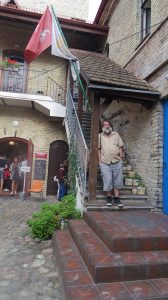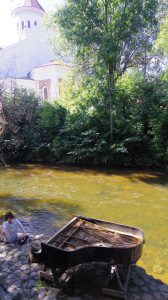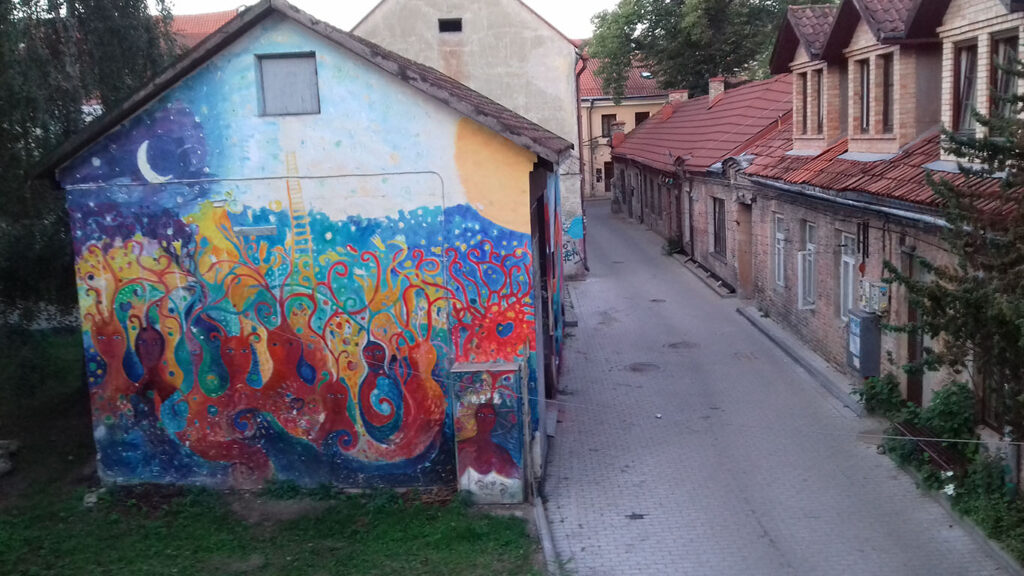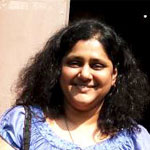ON the invitation of Sanskritik Mandala, I made my way to Lithuania to participate in the fourth edition of the project – a month-long art residency in Vilnius city. I was expected to paint and exhibit my finished works, as well as give a talk to Lithuanians on the idea and inspiration behind them. The exhibition concluded in a week-long art exhibition in Berlin, Germany.
Why a residency
The need for space to create art continues to be a challenge for many artists and art residencies I believe, are a boon, since they not only offer an artist the much required space and time, but also the opportunity to showcase his/her work to a wider and select audience. For an artist, writer, and adventurer like myself, who also juggles a family and a 9 to 5 job, the current art residency gave me the perfect opportunity to not only display my artworks to more people, but at the same time, it also gave me a chance to glimpse the everyday lives of Lithuanians, and learn from them their art, culture, lifestyle, etc., and incorporate these learnings in my work.

A summer in Vilnius
It was summer in Vilnius, and Tamara Artajeva, Founder and Director of Kūrybos Ratas, received me at Vilnus airport, and drove me to the Republic of Uzupis, a once abandoned and neglected neighbourhood, located in the old town of Vilnius, which is now a UNESCO heritage site, and the most visited place by both art lovers and tourists from all over the world.
Tamara, an arts project curator who graduated from Vytautas Magnus University as an art researcher, shared with me the meaning of Sanskritik Mandala and its origins. “It is not only a residency programme, but Society’s Art Develop- ment and Bilingual Cultural project, which includes a residency programme. In Hindi language, it means the Circle of Culture. The aims of the project were to establish dialogue between two geographically different cultures, bring together creators of contemporary art, inspire new circulation and exchange of creative initiations, and represent contemporary Indian artists’ expressions and aspects of art,” she said, further adding that the project had been successful in connecting over 20 Indian and 20 Lithuanian artists over the last four years.
The idea of a residency, was conceived by her husband Alak Pathak. “After we got married in 2014 and started living on both sides, in India and Lithuania, doing our personal projects, we realised that we could start a project of this kind. Although at the beginning we weren’t sure about its success and development, but we are happy that over the years, it has garnered wide interest and recognition and is now growing very fast,” said Tamara.
The magic of Uzupis
Uzupis, to me, was love at first sight. This magical place was to be my home for the next month. My studio-cum-apartment in a red-bricked old building, stood facing the river Vilnele. Since it was summertime, the riverside was dotted with people, some merely sitting around, while some made music on their musical instruments.

The studio was nice and airy with wide windows and equipped with a compact kitchenette and a cozy bed. I was to share this apartment with two other Indian artists. The realisation of working and living out of this historical space, which had been home to several renowned artists in the past, was a surreal experience.
Art was everywhere around Uzupis — in all its nooks and corners – and I was surely living and breathing it all in, every day. The walls of the buildings in Uzupis were covered in paintings created by artists living here, or who were merely passing by. Pianos in various stages of decline lay scattered around the old structures, as yet another art form. Often one could find tourists settling themselves on an antique piano that stood outside the Uzupis Art Incubator (a gallery located below my studio), and play their favourite melodies. While I would work on my canvas, this mesmerising music would filter in through the windows, creating a heady atmosphere, making it one of the most beautiful moments ever.
Uzupis, meaning ‘on the other side of the river’, is often compared to Montmarte in Paris, and Freetown Chris- tiania in Copenhagen, due to its bohemian atmosphere. The Independent Republic of Uzupis, has its own flag and constitution (like all Republics), since it came into existence in 1997 (few years post its exit from the Soviet Union), and is Lithuania’s biggest art project. With over 7,000 inhabi- tants and 500 ambassadors and honorary citizens worldwide, that also include the Dalai Lama, Uzupis celebrates April 1st or April Fools Day as Uzupi’s National Day.
A quirky Constitution!
The Constitution of Uzupis is also the most funny and affectionate one ever written, and is translated into over 33 languages, including Hindi and Sanskrit. These translations along with its three mottos—‘Don’t Fight’, ‘Don’t Win’, and ‘Don’t Surrender’, adorn the walls in the old town.
I got a chance to meet the Constitution’s co-writer, the Minister of Foreign Affairs of Uzupis, Tomas Chepaitis. The latter had penned it together with his friend Romas Lileikis. Tomas, who also teaches the Lithuanian language to a few Indians in Vilnius, says he finds Indian art colourful, lively, unexpected, and attentive to the essence of colours, and different from the European perception. The Minister cited he would love to set up art districts like Uzupis, in India too.
A poet and writer, Tomas is credited with translat- ing and publishing stories of Indian author Anita Desai, in Russian. His dedication towards supporting the arts beyond Uzupis is evident through his initiatives like ‘Mobile Multi-cultural Poetry Festivals – Frannie’ which is aimed at promoting international poets and writers, as well as the unveiling of the Uzupis Constitution at Munich’s Kreativquartier on December 18 this year. The latter is an effort to build bridges between the arts and technology. “It is the first constitution to mention artificial intelligence! Mr Roboy, an Uzupis Consul, is the first robot diplomat in the world!” he informed with pride.
Keeping art alive
A walk through Vilnius is enough to make you aware the seriousness of the country in not only preserving its past, but also its future. The blend of the old and the new is evident through the old churches with exquisite architecture that dot the city’s landscape, the modern buildings, the numerous art galleries, and the articulately planned public spaces.
Art in every form is kept alive by Lithuanian people, and I was fortunate enough to meet many such wonderful men and women – artists, painters, musicians, writers, art historians, chefs – each one creating their own artistic path for others to follow.
I am thankful for meeting the wonderful gallery duo Giedrius Bagdonas and Leva Matulionyte of Uzupis Art Incubator, who offered me their friendship and advice, the talented and vivacious musician and photographer Vadim Korotajevas, who introduced me to some amazing electronic music. I am thankful to artist Danielius Rusys, for connecting me to various facets of Lithuanian art, and the dignity in pursuing one’s work in silence, and to Chef Dominykas Gedvilas for exposing me to wonderful Lithuanian cuisine. I am thankful to the graceful Ruta Julija Klovaite and her lovely daughter Vytene, for their support and encouragement. I am thankful for having met the warm and loving artist Saulė Urbonė Urbanavičiūtė, for welcoming me into her life. I am also thankful for having met the wonderful and kind art historian and writer Vytautas Tumenas, who showed me the Lithuania he grew up in, its forests, countryside, lakes, its festivals and religion, and taught me the importance of smiling through life’s ups and downs. Last, but not the least, I am thankful to Sanskritik Mandala and to Lithuania, for making this art residency happen.
I hope, to make Lithuania proud, in my own way, someday.


 [/column]
[/column]